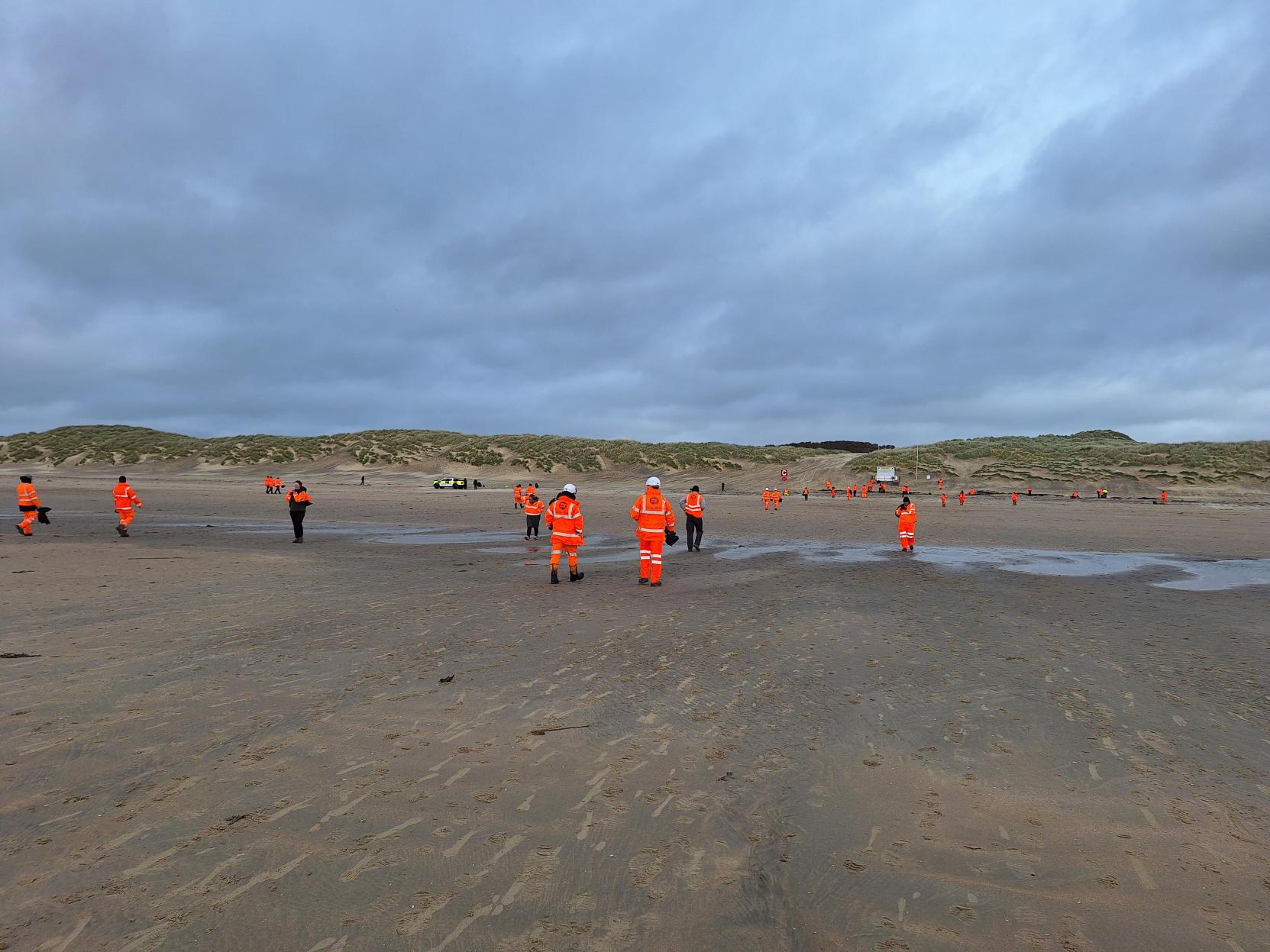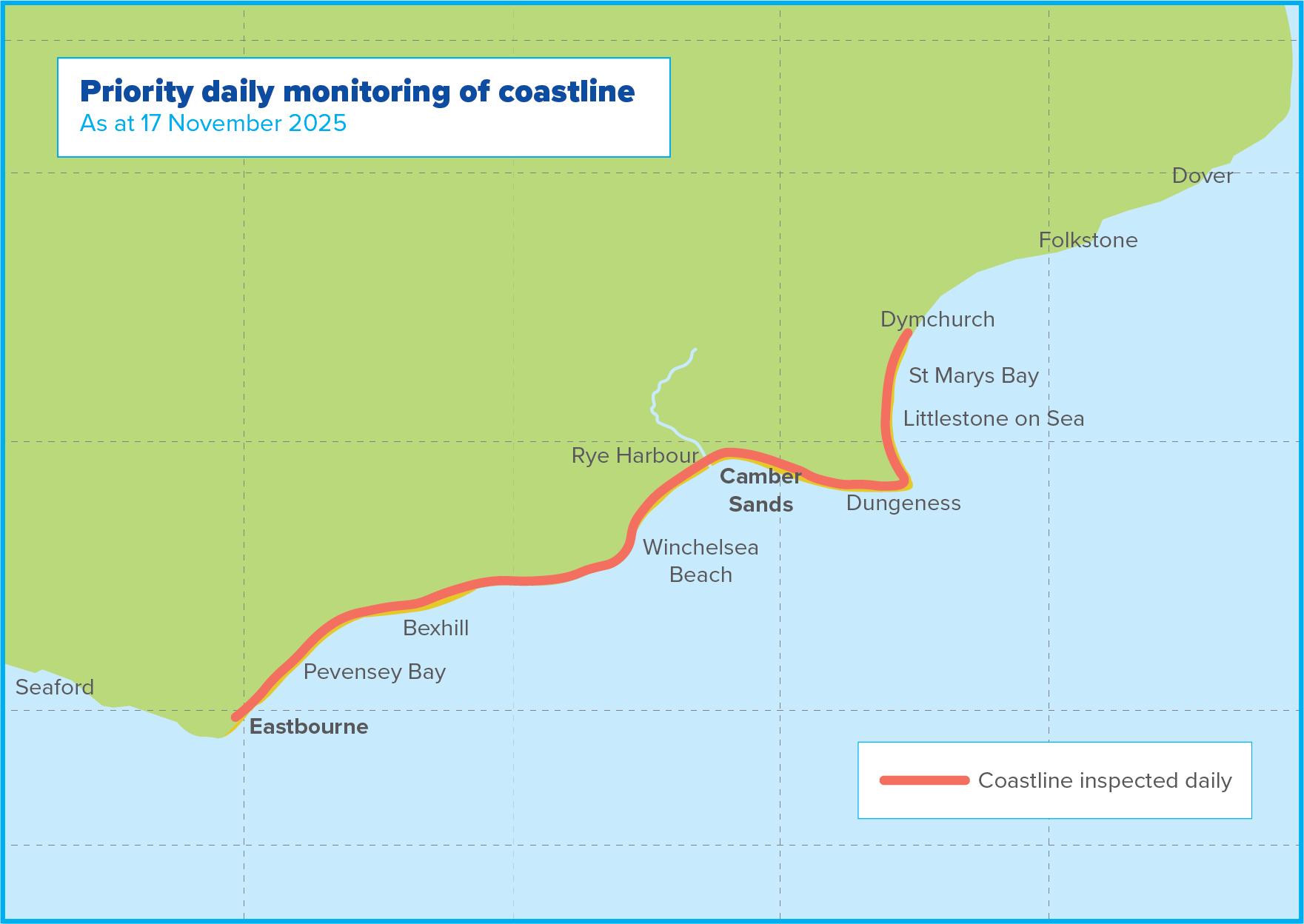Monday 17 November - evening
On Wednesday 29 October 2025, up to 10 tonnes of plastic beads which are used in wastewater treatment escaped from the Eastbourne Treatment Works and entered the sea via a 3.4km long outfall pipe.
We apologised sincerely for this rare and extremely serious occurrence, and we understand completely the anger and anxiety it has caused to communities along the south east coast. We are determined to do all we can to put things right, and we recognise this is a long-term, substantial commitment.
We have committed to an independent investigation into the cause, have commissioned expert advice relating to the longer-term impact, and are working closely with the Environment Agency as part of the clean-up and environmental response.
On Wednesday 29 October 2025, up to 10 tonnes of plastic beads which are used in wastewater treatment escaped from the Eastbourne Treatment Works and entered the sea via a 3.4km long outfall pipe. The release resulted from the failure of a metal screening filter that is designed to retain all beads in the tank.
As beads began to be washed up on Camber Sands during the week of 3 November, attracting public attention and triggering the start of clean-up operations, there were initial suggestions that the beads might have come from shipping. However Southern Water had sufficient evidence to confirm on the morning of Monday 9 November that it was highly likely the beads had come from our wastewater site.
Our modelling forecasts that residual beads may now remain off the coast between Eastbourne and St Mary’s Bay, highly dispersed and in low concentrations in the water. The 40-mile stretch of coastline between Eastbourne and St Mary’s Bay is believed to be the primary risk area for beads to be washed up.
We have retained specialist environmental contractors to investigate and monitor this length of coastline: they are conducting daily beach walks. Reports from MPs and members of the public are logged and followed up by the contractors, and any beads they find are removed. Whilst a large quantity of beads has been recovered, and more are retrieved each day, some are still washing up on beaches.
You can find a map showing the stretch of coastline monitored daily below.
As work has progressed to recover beads from the Eastbourne wastewater works, we have drained relevant tanks to measure the quantity of beads remaining on site: this has shown definitively that substantially more beads remain contained within the wastewater site than was first thought. From the firm evidence gathered, we calculate that less than 10 tonnes of beads entered the sea, whereas initial estimates were much higher.
According to the manufacturer, the beads are made of inert plastic and are non-toxic; they are chemically non-hazardous and stable. They pose no risk to water quality and are safe to touch — but, like any plastic, they shouldn’t be swallowed. Conservationists have already noted a risk to wildlife if animals eat the beads in the belief that they are food. Definitive advice to the public on the risk to animals from the beads will come from the Environment Agency (EA), the regulator, which has appointed its own experts to investigate what happened and to advise on long-term mitigation and recovery. We are working with the EA and are ready to help disseminate the agency’s messages on safety and environmental impact.
Plastic nurdles like these bio-beads are, unfortunately, very common in the environment worldwide. This means that not all nurdles found on the coast will necessarily originate from this incident. Where we receive reports of beads or nurdles being found, we will attend and investigate.
Southern Water teams, including specialist contractors, continue to support the clean-up effort at Camber Sands, working with Rother District Council. Some 80% of the beads initially deposited at Camber have been removed. Recovering the remainder by hand will inevitably take a considerable time. The monitoring and clean-up operation is likely to extend well into the future: there is a risk of further beads being washed up on strong tides. Sandy beaches like Camber Sands are more likely to retain the beads on the surface; this is less likely on shingle stretches of coast.
At Rye, we are working with the EA and Natural England to arrange for a boom to be erected to catch beads. Sluice gates on the marsh have been closed, preventing further entry of seawater carrying beads. It has been established that although the beads do not sink in the sea, they also do not stay on the surface. We are adapting removal methods in light of this: for example, the efforts we have made to retrieve beads by boat have so far not been successful because the beads are not sitting on the surface and are thought to be quite dispersed.
We’re agreeing a comprehensive clean-up plan, guided by the Environment Agency and supported by our specialists Adler and Allan, and beach-cleaning contractors Nurdle (who were brought in by Rother District Council). Southern Water will be at the heart of this sustained clean-up operation.
We will meet the cost of the clean-up, including the specialist equipment and contractors that the Council needed to hire to remove beads from the beach. The costs of our immediate response are being met from operational budgets. However, we can assure customers that this incident will not negatively impact necessary investment and services elsewhere. Our majority shareholder has made huge investments of equity to help fund the improvements Southern Water needs to make — these amount to more than £2bn since 2021. No dividends have been paid to investors since 2017, nor are any forecast before 2030: any profits are reinvested in improving our performance and new infrastructure.




